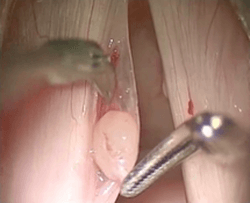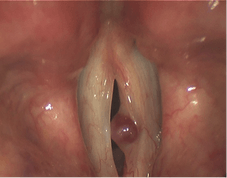MICROSURGERY FOR THE VOICE
SURGERY FOR THE VOICE
What is microsurgery for the voice (phonomicrosurgery)?
Phonomicrosurgery (or microsurgery of the vocal cords) is a delicate procedure using a microscope and microscopic instruments to remove lesions on the vocal cords while preserving the function of the vocal cords.
Many of the lesions on the vocal cords are the result of trauma in people who use their voice consistently, such as singers, performers, teachers, lawyers, doctors, broadcasters and salespeople.
PHONOTRAUMA
What lesions occur from vocal trauma (phonotrauma)?
Your vocal cords contact each other approximately 200 times in 1 second. In patients with high vocal demand, more frequent collisions can lead to the development of lesions on the vocal cords that affect how they come together and/or vibrate. This is a condition called phonotrauma. People who use their voice consistently such as singers, performers, teachers, lawyers, doctors, broadcasters and salespeople are most susceptible to phonotrauma. Examples of phonotraumatic lesions include:
- Vocal cord nodules - A collection of stiff tissue under the epithelium of the vocal cords
- Vocal cord polyp - A soft blister of the vocal cord, usually on one side that may have recurrent bleeding
- Vocal cord cyst - a lesion deeper in the vocal fold that may be related to phonotrauma or congenital
- Vocal cord ectasias or varices - dilated or abnormal blood vessels under the surface of the vocal cord that can bleed and cause vocal fold stiffness.
- Vocal cord sulcus - scarring of the vocal cord with loss of pliable tissue leading to reduction in vocal cord vibration
PHONOMICROSURGERY
How are traumatic vocal cord lesions treated?
A video stroboscopy can be performed in our office to determine if your voice problems are the result of one of these treatable vocal cord conditions, such as vocal cord nodules, vocal cord polyps, vocal cord cysts, vocal cord ectasias or varices, or vocal cord scarring.
Traumatic lesions of the vocal cords can often be managed with voice therapy, but microsurgery may be required in some cases. During the surgery, a small flap of the vocal cord lining is raised to preserve function and the lesion is gently removed.


